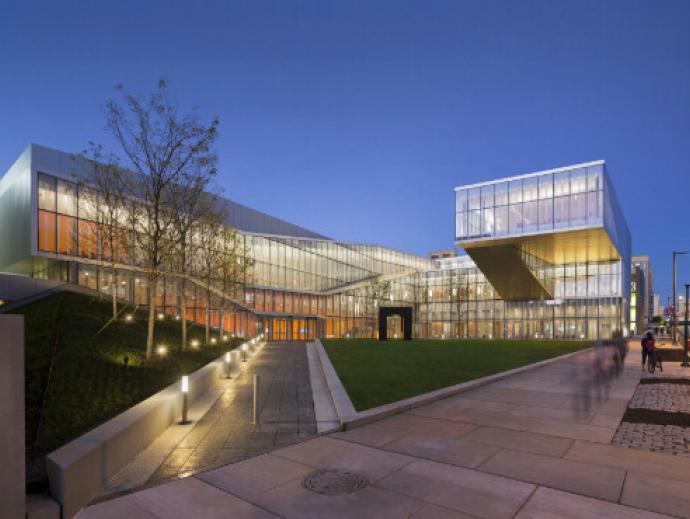Singh Center Balances Precise Science with Green Design

The 78,000 square-foot Krishna P. Singh Center for Nanotechnology will serve as Penn’s focal point for groundbreaking work in the emerging field of nanotechnology, which involves the manipulation of matter on an atomic and molecular scale.
Singh Center Balances Precise Science with Green Design
The 78,000 square-foot Krishna P. Singh Center for Nanotechnology will serve as Penn’s focal point for groundbreaking work in the emerging field of nanotechnology, which involves the manipulation of matter on an atomic and molecular scale.

The University officially opened the region’s premier facility for advanced research, education, and innovative public/private partnerships in nanotechnology on October 4. The 78,000 square-foot Krishna P. Singh Center for Nanotechnology will serve as Penn’s focal point for groundbreaking work in the emerging field of nanotechnology, which involves the manipulation of matter on an atomic and molecular scale.
Creating a building for such precise scientific work presented a design challenge of its own, a challenge increased by Penn’s commitment to build all new buildings to at least LEED Silver specifications. Now, three years after this building was conceived, the Singh Center is poised to earn this U.S. Green Building Council designation, and perhaps higher.
Many of the building components and operational systems that occupants will never see have contributed significantly to the LEED rating scale. High-efficiency mechanical, electrical and plumbing equipment for public spaces in the building operates at 14% above industry standard levels. Plumbing fixtures and systems reduce water use to 30% below industry standards. Other building systems exclude the use of refrigerants that have been shown to contribute to global warming.
Regionally manufactured and extracted materials, as well as materials with recycled content, were installed throughout the project wherever possible. Sourcing local and recycled content materials alleviates some of the environmental stress related to the manufacturing and transportation of building materials. Interior finish materials (such as paint) are low-emitting materials with minimal off-gassing to improve air quality. Fresh air ventilation has been increased well above industry standard to improve indoor air quality.
Natural daylight floods the building, obviating use of lighting fixtures in many of the study and work spaces for much of the day.
More noticeable LEED features include a green roof that sports a sunny deck, benches, magnolia trees and native grasses. A second, less-trafficked green roof holds the placement of building mechanical systems. These green roofs reduce storm water runoff and the urban heat island effects, while encouraging biodiversity through the creation of local habitats. A wide front lawn on Walnut Street conceals a generous cistern below grade to capture and store rainwater that falls on the site for irrigation.
University Architect David Hollenberg marvels at the amount of creativity given to linking the workspace requirements of the scientists with the specifications of environmentally sustainable design. He points to the use of glass curtain wall design as illustrative of this achievement. “Glass is more than an aesthetic feature in the Singh Center,” he says. “At the labs, the amber glass filters the UV rays detrimental to the research, but allows observation of the work taking place. Clear glass exterior walls maximize the use of daylight, and bring the outside in to those using the gathering spaces on the stair lounges and second floor. The carefully designed fritting of the glass walls creates patterns of light and shadow that change and move throughout the day. Penn could not have a better synthesis of science and art than we have in the Singh Center.”
Read the media release on the Krishna P. Singh Center for Nanotechnology.
Photo credit: ESTO